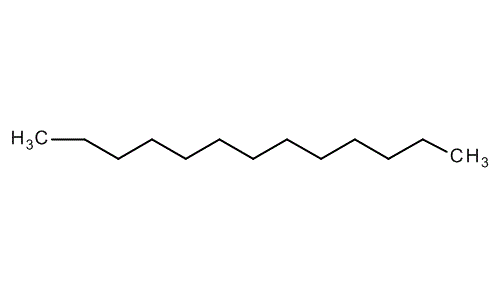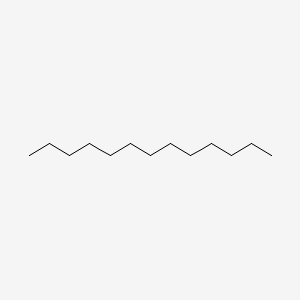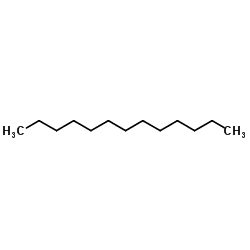Appearance Colourless liquid Formula C13H28 Specific heat capacity (C) 406.89 J K−1 mol−1 Odor Gasoline-like to odorless | Boiling point 234 °C Refractive index (nD) 1.425 Henry's law constant (kH) 4.3 nmol Pa−1 kg−1 | |
 | ||
Tridecane is any alkane hydrocarbon with the chemical formula C
13H
28, or to a mixture of them. There are 802 constitutional isomers with that formula. In the IUPAC nomenclature, the name refers exclusively to one isomer, the straight-chain CH3(CH2)11CH3, also called normal or n-tridecane; the other isomers are named as derivatives of lighter hydrocarbons, as in 2,2,4,4-tetramethyl-3-t-butyl-pentane.

Tridecanes are combustible colourless liquids. In industry, they have no specific value aside from being components of various fuels and solvents. In the research laboratory, n-tridecane is sometimes also used as a distillation chaser.

Natural occurrence

Nymphs of the southern green stink bug produce n-tridecane as a dispersion/aggregation pheromone which possibly serves also as a defense against predators. It is also the main component of the defensive fluid produced by the stink bug Cosmopepla bimaculata.

